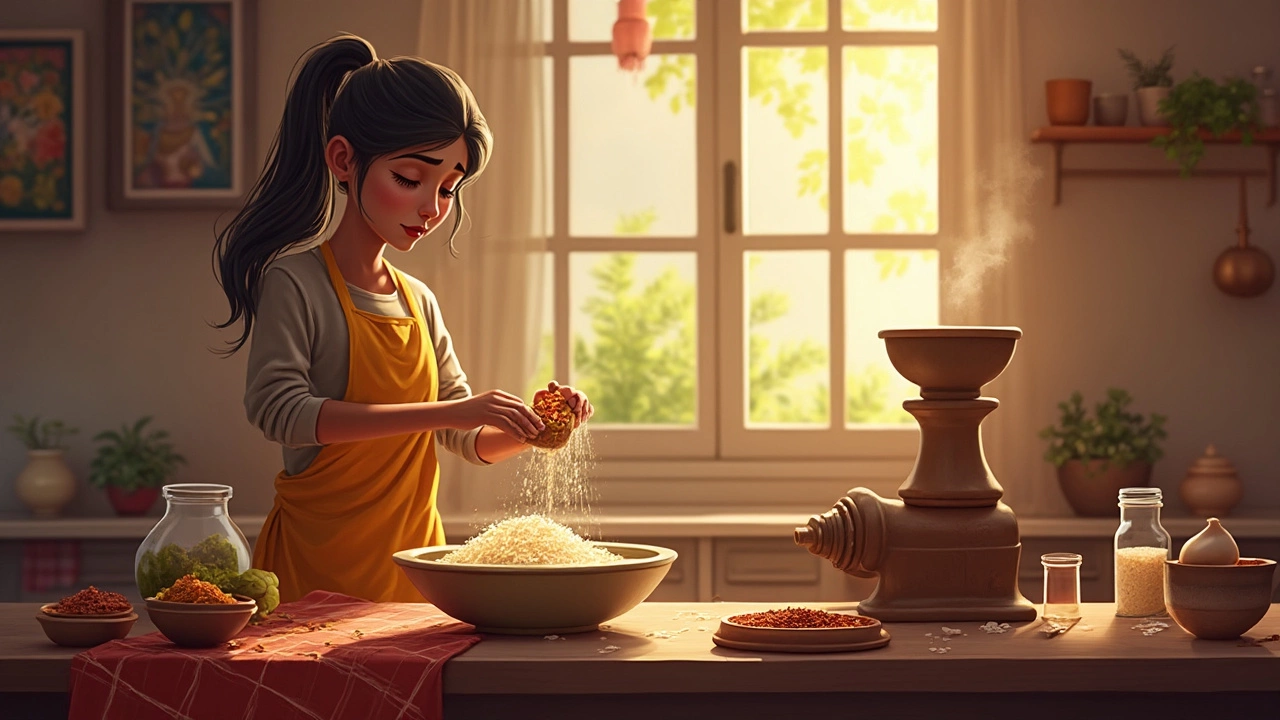Yeast: The Secret Behind Fluffy Indian Breads
When working with yeast, yeast, a living microorganism that feeds on sugars and releases carbon dioxide, causing dough to rise also known as baker's yeast, it becomes the engine of many Indian breads. Fermentation, the process where microbes break down sugars into acids and gases is the broader reaction yeast drives. In the kitchen, dough, a mixture of flour, water, and often a leavening agent is the canvas that reacts to those gases, puffing up into soft rotis, naan, or fluffy idlis. Understanding these three entities helps you move from flat chapatis to airy delights with confidence.
Why Fermentation Matters in Everyday Indian Recipes
Most home cooks think fermentation is only for sourdough or fancy pastries, but Indian cuisine relies on it daily. Our post about speeding up dosa batter fermentation shows that a few hours of warm time can turn raw rice‑lentil mix into a bubbling batter ready for a crisp dosa. The same science applies to idli, uttapam, and even the occasional soft roti when you swap baking soda for yeast. Fermentation not only lifts the texture; it creates subtle tanginess that balances fatty ghee or oil in dishes like biryani or butter chicken. The acidity also helps break down gluten, making the final bite less chewy.
When you add yeast to a flour‑water mix, the microbes start eating the sugars released during kneading. This feeding produces carbon dioxide bubbles that get trapped in the gluten network, making the dough rise. If you’ve ever tried the “why isn’t my roti puffing?” article, you’ll recall that a weak gluten network or low fermentation can keep rotis flat. By giving the dough enough time to ferment, you let the gluten stretch and hold those bubbles, resulting in a puffed, soft roti every round.
Leavening isn’t limited to yeast. Some recipes, like the “baking soda in roti” guide, suggest a pinch of soda to create a quick rise. Baking soda reacts with acidic ingredients—think curd, lemon juice, or even the natural acidity from fermented batter—to produce similar gases. While soda gives instant lift, it doesn’t develop the deep flavor that yeast fermentation does. Knowing when to use yeast versus a chemical leavener lets you choose between a fast shortcut and a richer, more aromatic outcome.
Curd plays a dual role in many Indian batters. As explained in the “why add curd to dosa batter” piece, the mild acidity from curd speeds up yeast activity and provides a friendly environment for other microbes. This synergy shortens fermentation time and adds a pleasant sour note to the final product. If you’re short on time, a splash of yogurt can replace a portion of the yeast, but the texture will differ. Experimenting with curd, lemon juice, or even a tiny amount of vinegar helps you fine‑tune the rise without sacrificing flavor.
Temperature is another hidden factor. Warm kitchens (around 30‑35 °C) give yeast a happy home, while a cold kitchen slows the process dramatically. Our “instant dosa batter” tips recommend a warm spot—like an oven with the light on—to keep the microbes active. Conversely, during hot summer months, you may need less rising time to avoid over‑proofing, which can cause dough to collapse.
Putting these pieces together, you can see how yeast connects to fermentation, dough handling, and other leavening agents. Whether you’re making a classic butter chicken biryani that needs fluffy rice or a simple roti that should puff up on a hot tawa, the underlying chemistry is the same: microbes produce gas, gluten traps it, and heat finalizes the structure. This trio of entities shows up across the articles in our collection, from “why isn’t my roti puffing?” to “baking soda in roti” and “ferment dosa batter instantly.”
Now that you’ve got the basics of how yeast works, the next step is to see it in action. Below you’ll find a hand‑picked set of tips, tricks, and deep dives that walk you through using yeast, swapping it with baking soda, mastering dough fermentation, and troubleshooting common problems. Dive in and turn your kitchen into a flavor lab.

Is Adding Yeast to Dosa Batter a Game Changer?
Exploring the debate around adding yeast to dosa batter, this article delves into how yeast can influence fermentation, texture, and taste. Discover the pros and cons of this approach, as well as alternatives for achieving that perfect dosa crispiness. Get tips on balancing modern kitchen conveniences with traditional flavors. Ideal for home cooks seeking to enhance their dosa-making skills.